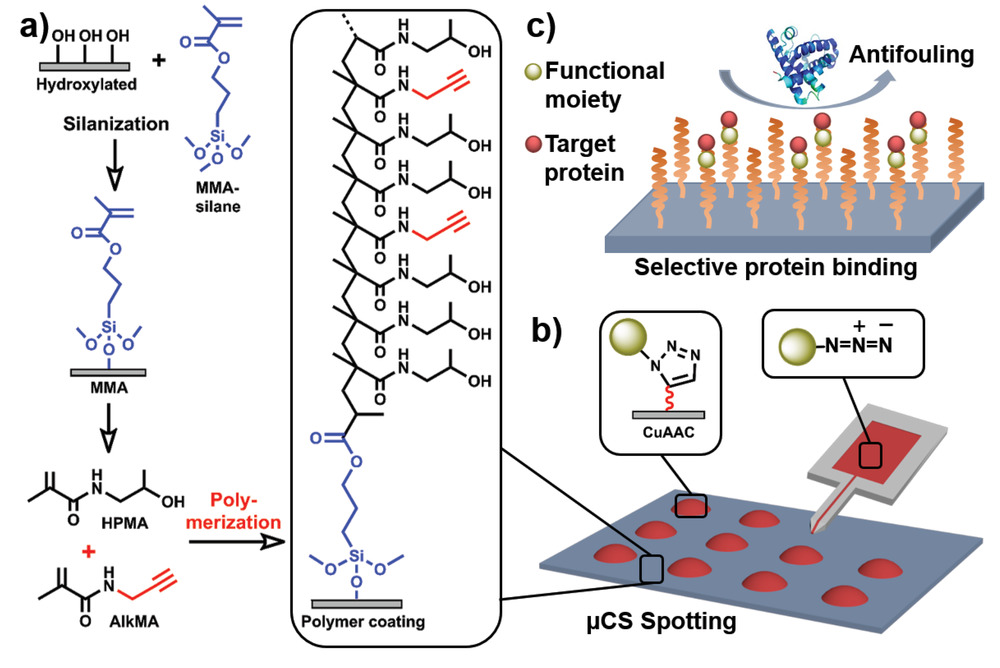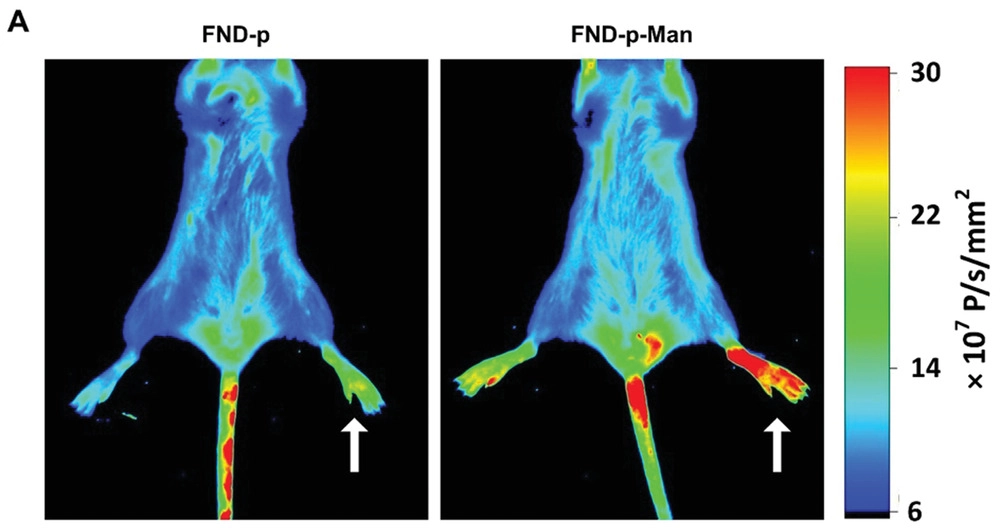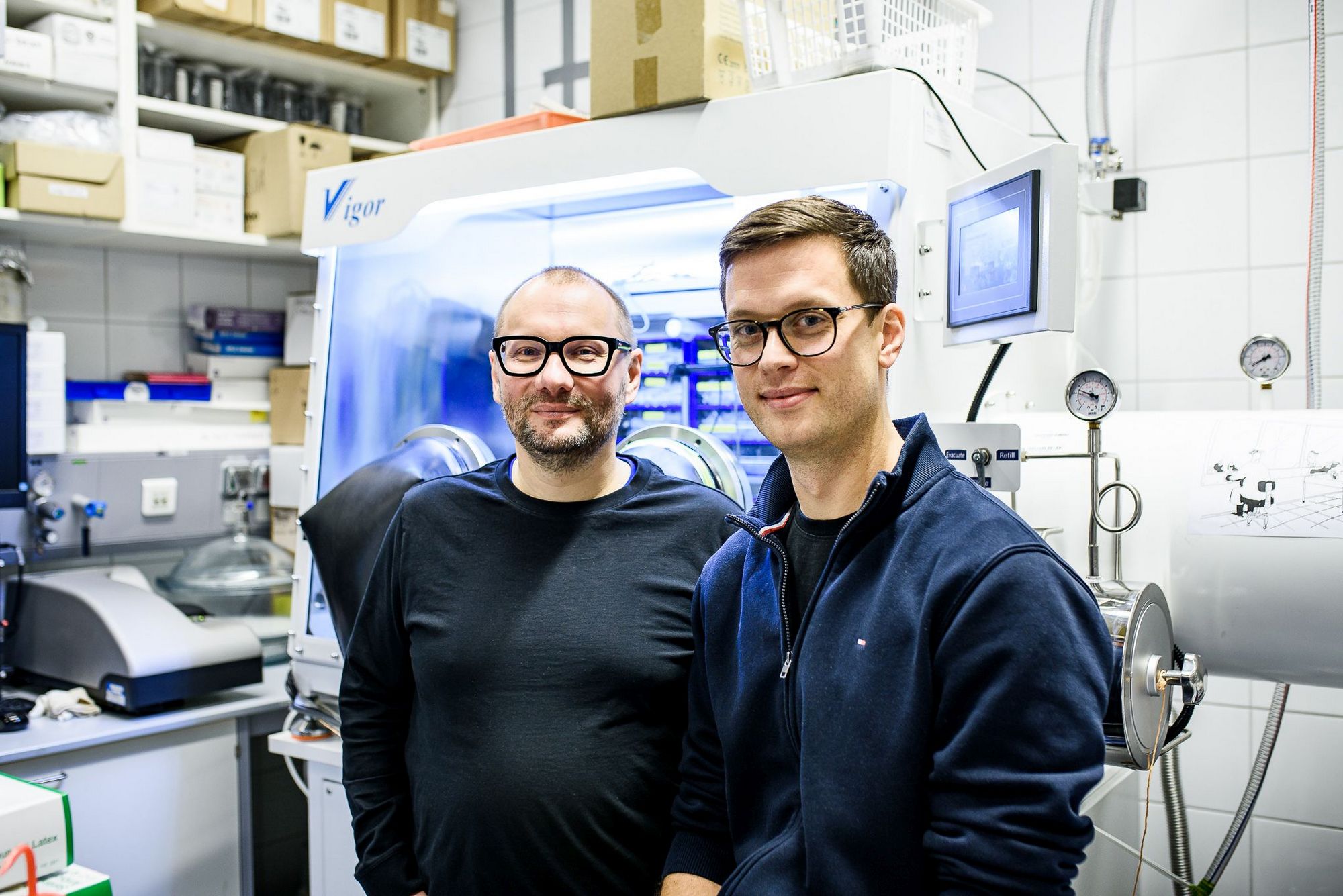
Diamonds can find applications in multiple disciplines including optics, electronics, analytical chemistry, and quantum technology. Many of these applications require a chemical control of the diamond surface to enable attachments of appropriate functional moieties or creation of interfaces resistant to biological environments. To construct (bio)sensors selectively operating in biological fluids, diamonds must bear a thin antifouling interface coating as they are susceptible to unspecific adhesion of proteins and other macromolecules from biological media or complex samples.
The international team led by Petr Cígler from IOCB Prague and Michael Hirtz from Karlsruhe Institute of Technology (KIT) in collaboration with Fraunhofer Institute for Applied Solid State Physics and nanoAnalytics GmbH developed a stable polymer coating compatible with oxidized diamond surface. The coating consists of two segments, a protein-repellent part together with alkyne-bearing units enabling covalent immobilization of functional compounds via azide-alkyne cycloaddition (“click” reaction). The several nanometers thick polymer was grown using “grafting through” radical polymerization.
To demonstrate the potential of the new technique, the scientists used microchannel cantilever spotting (µCS) to construct potential biosensors using fluorescence readout. In comparison to the current approaches, the µCS on diamonds can significantly simplify the manufacturing of diamond-based chips, save analysis time, and promote the prospects of the diamond in biosensing applications.
Read the article: Kumar, R.; Yang, B.; Barton, J.; Stejfova, M.; Schafer, A.; Koenig, M.; Knittel, P.; Cigler, P.; Hirtz, M. Diamond Surfaces with Clickable Antifouling Polymer Coating for Microarray-Based Biosensing. Adv. Mater. Interfaces 2022, 9, 2201453. https://doi.org/10.1002/admi.202201453






